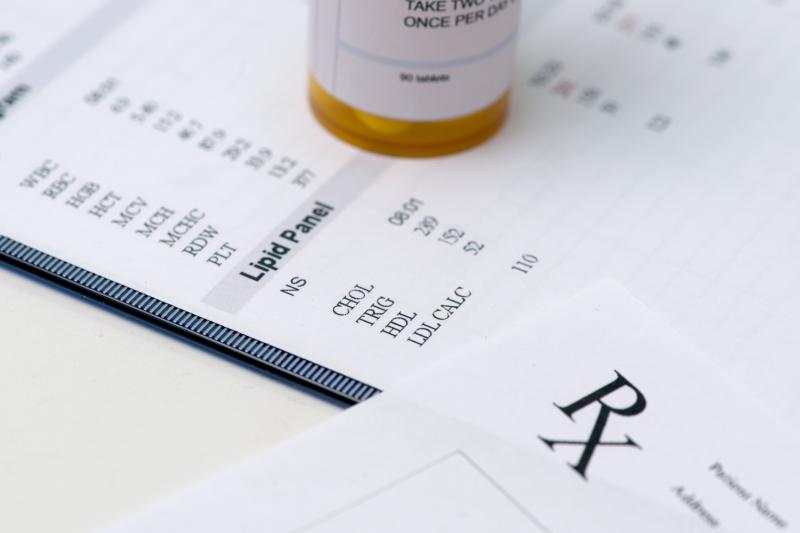Starting lipid-lowering therapy for ASCVD prevention: How early and in whom?





Intensive cholesterol-lowering therapy yields substantial reductions in the risk of atherosclerotic cardiovascular disease (ASCVD) over a 30-year period. This can be achieved if therapy is initiated in individuals in their 40s and 50s with non–high-density lipoprotein cholesterol (non-HDL-C) levels at least 160 mg/dL, according to a team of researchers.
“Our analysis indicates that the absolute benefit from treatment for 30 years with lipid-lowering therapy of a 30-year old with no current indications for lipid-lowering drug therapy and low levels of non-HDL-C is small,” they said. “By contrast, the expected benefit from … treatment starting at age 50 in the high non-HDL-C subgroup is substantial, even in the face of a low predicted 10-year risk.”
The team pointed out that a delay in initiating lipid-lowering therapy might lead to suboptimal outcomes, as a number of events would have occurred before therapy had even begun.
In their study, the researchers examined the benefits of early vs delayed cholesterol-lowering in ASCVD prevention based on short-term effects observed in statin trials (model A) and longer-term benefits based on Mendelian randomization studies (model B).
The study population comprised 3,148 NHANES (2009-2016) participants aged 30–59 years. None of them were eligible for lipid-lowering treatment under the most recent US guidelines. The predicted 30-year risk of ASCVD increased progressively with higher age and non-HDL-C levels, from a mean of 4.2 percent among 30–39-year olds with non-HDL-C <130 mg/dL to a mean of 21.5 percent among 50–59-year-olds with non-HDL-C ≥160 mg/dL.
Both models showed that potential reductions in predicted 30-year ASCVD risk were greater in older age and higher non-HDL-C categories. In the group of 40–49-year-olds with non-HDL-C ≥160 mg/dL, for instance, immediate initiation of lipid lowering (treatment for full 30 years) would be expected to reduce their average predicted 30-year risk of 17.1 percent to 11.6 percent (model A: absolute risk reduction [ARR], 5.5 percent) or to 6.5 percent (model B: ARR, 10.6 percent). [Circulation 2020;doi:10.1161/CIRCULATIONAHA.120.045851]
Meanwhile, a 10-year delay in lipid lowering (treatment for 20 years) in the same group of individuals would yield a residual 30-year risk of 12.7 percent (model A: ARR, 4.4 percent) or 9.9 percent (model B: ARR, 7.2 percent). A further 20-year delay (treatment for 10 years) would lead to expected mean residual risk of 14.6 percent (model A: ARR, 2.6 percent) or 13.9 percent (B: ARR 3.2 percent).
As expected, the benefit predicted by model B exceeded that by model A, the researchers noted. This is because the latter was intended to capture the benefit of plaque stabilization, whereas model B captured the gains from both lesion stabilization and prevention of new lesion formation.
“Equally important, the consequences of delay in lipid-lowering therapy initiation to age 50 or 60 rather than age 40 is also substantial,” they added, pointing out that although atherosclerosis progresses at different rates in different individuals, in general, those who are younger will have less established disease than those who are older.
“Limited benefit later in the disease process should be anticipated, because statins at most can modify the abnormalities produced by atherosclerosis but cannot entirely reverse them. By contrast, to the extent formation of complex lesions is reduced, prevention of later clinical events by statins should be complete,” the team explained.
They also emphasized that the formula to estimate benefit used treatment duration, not age of initiation. While this may be the case, the two factors go hand in hand, such that “earlier initiation allows longer duration and longer duration usually implies earlier initiation.”
“The current paradigm for lipid-lowering recommendations is based on the decision on whether lipid-lowering drug therapy should be initiated,” the researchers concluded. “This work provides tools to understand how to change the paradigm to ‘when,’ rather than ‘if,’ intensive lipid-lowering should be initiated.”